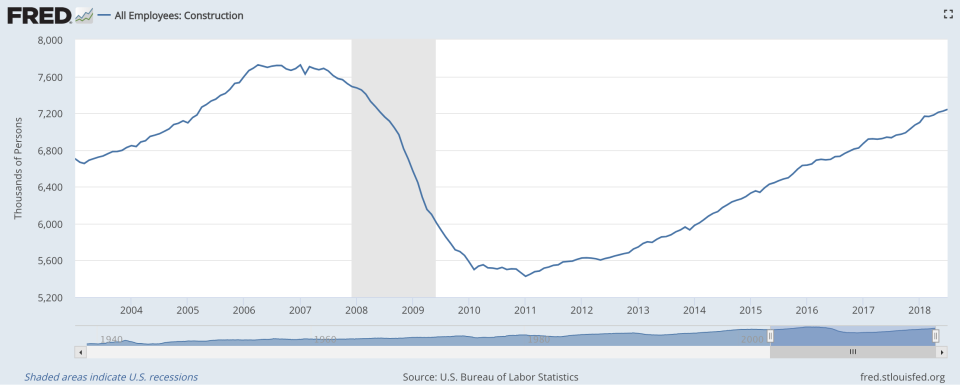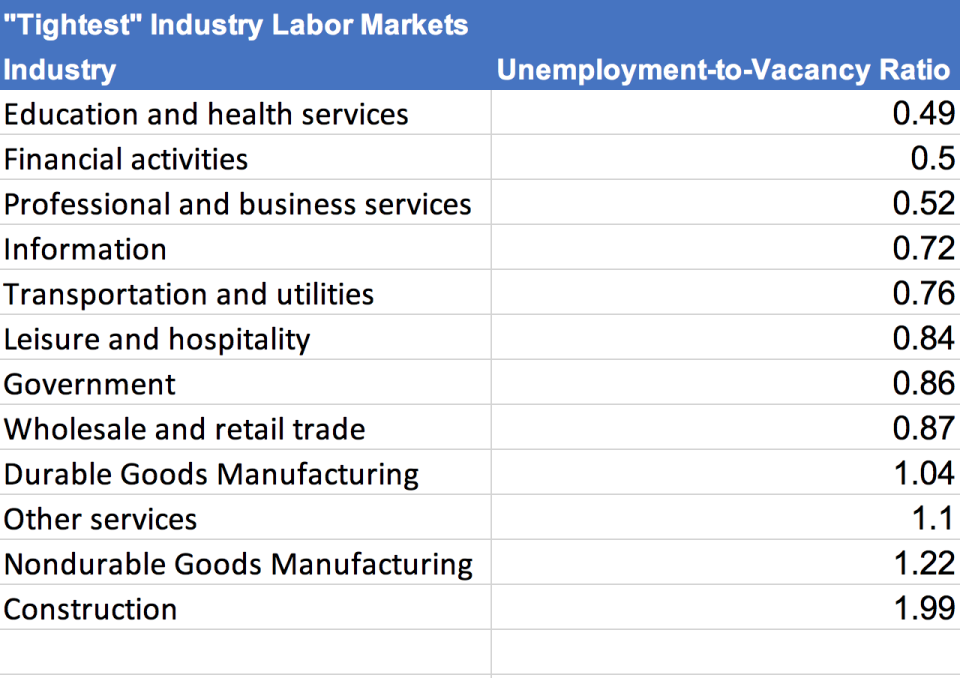Construction industry 'is still dealing with the ramifications' of the financial crisis
The construction industry boasts the biggest ratio in unemployment to vacancy, according to an Indeed study of Bureau of Labor Statistics data.
The data, which is from April through June 2018, showed that there were nearly two openings for every job seeker. Nick Bunker, an economist with Indeed’s Hiring Lab, attributes it to overhang from the Great Recession.
The 2008 financial crisis “was a huge shock to the [construction] industry, and they’re still dealing with the ramifications from it,” Bunker told Yahoo Finance.

A long hangover
Between 2007 and 2011, the construction industry shed more than 2.2 million jobs. Bunker noted that the unemployed-to-vacancy ratios “spiked crazy high” during that time. It has since recovered, though the years since have been about making up lost ground.

While construction firms are readily hiring these days, many workers are aging out, leading to a worker shortage. According to CNBC, there were approximately 190,000 new construction workers in 2017, which was notably less than the three-year average of 284,000 annual additions.
Friday’s jobs report indicated an additional 23,000 construction jobs added, bringing the total to 297,000 for the year. Nevertheless, the industry is nowhere near to being tight on labor supply.
‘The job market is hot’
The following chart, which spans from April through June 2018, represents the relative amount of people who are unemployed but looking for a job versus the number of what a company would like to hire but hasn’t done so yet.
The higher the number, the more job openings there are in the industry.

The overall labor market currently stands below 1.0, meaning that there are more open jobs than unemployed people.
“The job market is hot,” Mark Zandi, chief economist of Moody’s Analytics, stated in the ADP National Employment Report. “Employers are aggressively competing to hold onto their existing workers and to find new ones. Small businesses are struggling the most in this competition, as they increasingly can’t fill open positions.”
Bunker remarked that while doing his research, the one thing that stuck out was not seeing an increase in wage growth, despite an increase in job openings. (The August jobs report showed a surge in wage growth, but the significance has been disputed.)
“It’s interesting,” he said. “A big puzzle for the US labor market.”
Follow Adriana on Twitter.
Read more: Planes are ridiculously crowded these days, and a pilot explains why

 Yahoo Finance
Yahoo Finance 
